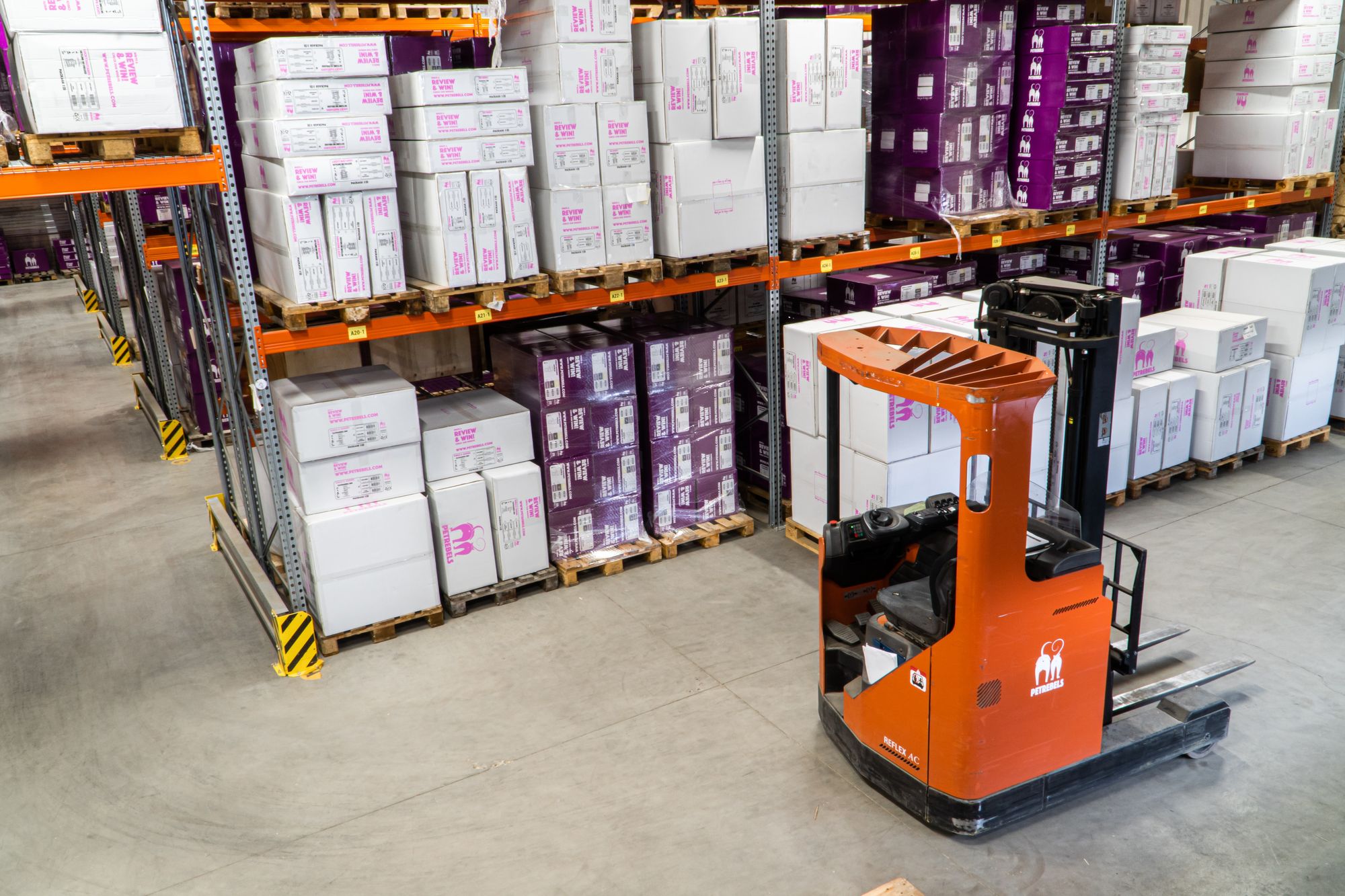


While dealing with the international shipping process, it is compulsory to know about incoterms. Here, incoterms (international commercial terms) are the standard terms — that define and describe the transactions involving two parties, usually the exporter and the importer of products.
FOB or Free on Board, is one of those incoterms that is commonly used when it comes to international shipping. You will find this term on FOB invoices related to the delivery and receiving of goods.
Today, we will cover the concept of FOB invoices and their associated elements thoroughly. Let’s check the table of content:
Free on Board or FOB is a transportation term related to international commercial law. It indicates numerous terms & conditions pertaining to the delivery of goods.
This FOB invoice transportation term appears on transportation agreements and indicates whether the vendor or the buyer is accountable for damaged or destroyed products during the shipping process.
There are two types of FOB:
Moreover, the FOB type also specifies who is legally accountable for the goods being shipped and when that responsibility is transferred during transportation.
Additionally, the FOB invoice contract terms stipulate certain criteria. It includes elements such as who regulates the transfer of the goods and when the title belongs to the buyer. The obligation for the items and their cost is transferred from one party to the other according to the various add-on clauses.
The term "free on board" is also used interchangeably with "freight on board." However, this does not adequately reflect how it works in practice.
If you see this designation on an invoice, it means that the person or company who provided the goods to you was liable for them until the point on the invoice after "FOB."
However, if your FOB invoice reads "FOB Shipping Point," — it means that the seller or shipper was solely accountable for the items until they started shipping.
On the other hand, if it says “FOB Destination” — it states that the exporter was liable for the items until they arrived at your selected delivery destination ot use your address or city instead of "Destination.”
The origins of FOB can be traced back to a time when sea trade was the predominant mode of transportation. FOB used to refer only to goods shipped by ship, but the term has since been expanded to encompass all means of transportation in the United States.
Global transportation contracts frequently include abbreviated trade phrases. It contains elements such as delivery location and time when the risk of loss moves from the seller to the buyer, payment, and who pays for shipping costs and insurance.
At the time, the primary benefit of employing FOB was to determine who owned the freight in the event of damage or theft during transit. To reduce needless costs, it is critical to establish standard FOB terms that should be included in the purchase order or contract.
According to the FOB terms, the more frequently a company orders inventory, the higher the shipping and insurance charges will be.
Moreover, when executing an inventory order— companies may incur expenditures. It includes costs such as employing workers to unload the products and leasing a warehouse to keep the goods.
However, a company's inventory costs can be reduced by acquiring larger quantities and lowering the number of individual shipments it receives.
Although the International Chamber of Commerce (ICC) provides Incoterms, the most widely used international commerce terminology. Moreover, the enterprises exporting goods within the United States must also obey the Uniform Commercial Code (UCC).
In addition, the contracting parties must indicate which set of rules will apply to a shipment because there are various sets of rules and legal definitions of FOB differ from country to country.
For small businesses, FOB is a fundamental accounting tool. It establishes the conditions of the contract, determining who is responsible for shipping costs and damaged shipments. It also captures the point of sale.
If the products are FOB invoice shipping points, then the buyer will mark them as sold. It is done once they depart the seller's premises. Despite the fact that the buyer has not yet received it, the buyer will add it to the channel as inventory and mark it as an asset.
For Example:
In the shipping point agreement of $80,000: The seller would deposit $80,000 in accounts receivable and deduct $80,000 from inventory when the goods were delivered.
On the other hand, the buyer would do the opposite of this case. Once the products came from the supplier, the buyer would have to add $80,000 to their inventory and $80,000 to their accounts payable. Even if the products had not yet arrived, the inventory would be a valuable asset in their accounts.
Regardless of whether the buyer or seller pays for shipment, they must record such expenses in their account book. Examples of freight charges include loading the goods at the shipping pier, the cost of handling & expenses of transporting to the vessel, shipping, and insurances.
Free onboard freight is divided into two categories: free onboard shipping point and free onboard destination.
Furthermore, FOB prices comprise loading of products, transportation to the dock, marine freight, insurance, unloading of goods at the target port, and transportation charges up to the final destination.
Several methods are used to acquire FOB destination prices. Modifiers qualify the FOB location words origin and destination. The payment of transportation charges is decided by the modifiers. The following are the three most prevalent modifiers:
Let’s understand these two terms in detail:
The word "FOB shipping point" is an abbreviation for "Free on Board Shipping Point." It denotes that the vendor transfers control and accountability of the products to the customer at the point of origin (the vendor's location).
It further refers to when a client accepts delivery of goods that have been supplied to them by a supplier and have left the provider's shipping port.
Moreover, the supplier should record a sale at the moment of departure from the provider's shipping pier since the buyer assumes ownership at that time.
The purchaser is responsible for the cost of transporting the goods under FOB shipment point terms. Also, buyers would be responsible for goods once they leave the warehouse, dock, factory, or premises.
If the things are damaged during transit, the client should file a claim with the insurance carrier because the client owns ownership of the commodities during the time they were destroyed.
FOB Destination refers to when the vendor's liability for and custody of the products passes to the buyer when the goods arrive in great condition at the buyer's location.
FOB Destination terminology is divided into three categories:
Furthermore, the buyer benefits far more from FOB destinations than the vendor. FOB location protects the buyer against unintended losses that may occur during transportation. FOB shipping points also work profitably for the seller. If the products are being sent to Texas, for example, the invoice will state FOB Texas.
In international shipping agreements, the phrases FOB and CIF are both employed. Moreover, the distinction between the two is determined by who is responsible for the goods en route.
Let’s check the following example of FOB to understand better:
FOB Value = Ex-Enterprise Cost + Other costs
*Here other costs are referred to packaging charges, custom clearance charges, transportation charges.
Quality of commodities sold = 200 Kgs
Total Value = Rs. 10,000
Transportation charges= Rs.500
Packing charges= Rs.1,000
Custom clearance charges= Rs.500
Total other costs= Rs.2,000
FOB Cost = Rs. 12,000
The complexity of FOB agreements is often misunderstood, according to a 2018 study by Ki-Moon Han of the Korea Research Society for Customs. According to Han, more intricate agreements are gradually being used to fulfill the needs of international traders.
According to Han, more intricate agreements are gradually being used to fulfill the needs of international traders. Also, some concepts are often misinterpreted by the concerned parties in the agreements. It includes Incoterms FOB, sales contracts, transportation contracts, and letters of credit
Han recommends companies operate with care. Also, they need to be explicit about the sort of FOB they are engaged in so that risks and liabilities are evident.
To facilitate a smooth transfer of goods from the vendor to the client, each entity should have a solid grasp of free on board (FOB). FOB conditions can have a significant impact on inventory, shipping, and insurance costs. It is regardless of whether the transfer is domestic or international.
Following we have discussed some crucial frequently asked questions of FOB. Let’s check:
Packaging of goods onto the shipping vessel, Movement of products to the shipping port, insurance, freight transport, and unloading and moving of goods from the arrival port to the final destination are all FOB invoice expenses.
When the terms state "Freight collect, FOB origin" the buyer is responsibly accountable for both the products and the freight charges.
Furthermore, the purchaser of goods is accountable for the products at the point of origin when the terms "FOB Origin, freight prepaid" got employed. But the supplier is responsible for the transportation charges.
Buyers who are accustomed to international commerce typically choose FOB value. At the port where items are to be imported, such purchasers have their logistics and forwarding agencies.
However, the vendor is only responsible for delivering the products to the closest delivery port. They are deemed delivered by the vendor at this point.
Furthermore, the most major benefit of choosing FOB is that the buyer has the ability to negotiate for freight services and obtain the best price. Although, it is advisable to buy FOB and sell CIF in international trading.
If you notice "FOB" on an invoice that came with your shipment. Then, it means that all shipping charges have already been paid. And, the word is just to let you know how your products were shipped.
Moreover, if you get an invoice before the seller ships the items. Then, check at the text after the "FOB" mark to see who is responsible for the shipping expenses. If you have any questions, contact the seller to learn more about it.
Deskera's invoice template can help businesses in a spectacular manner. The free, easy-to-use template allows you to rapidly make sales invoices, freeing up time to focus on other important parts of your business.
![]()
![]()
![]()










According to Accenture's "2020 Innovation Maturity Index," 82% of executives believe innovation is very important for…
11 min read Feb 15, 2023

According to Grand View Research, in 2019, the global distributed order management market size was valued at $3.3 billion…
21 min read Feb 14, 2023

Make-in-order production is an important component of the global order promising system. The global order promising system is designed to…
10 min read Feb 7, 2023Hey 👋! Discover the best! Now!
Get Accounting, CRM & Payroll in one integrated package with Deskera All-in-One.
Hey 👋! Discover the best! Now!
Get Accounting, CRM & Payroll in one integrated package with Deskera All-in-One.